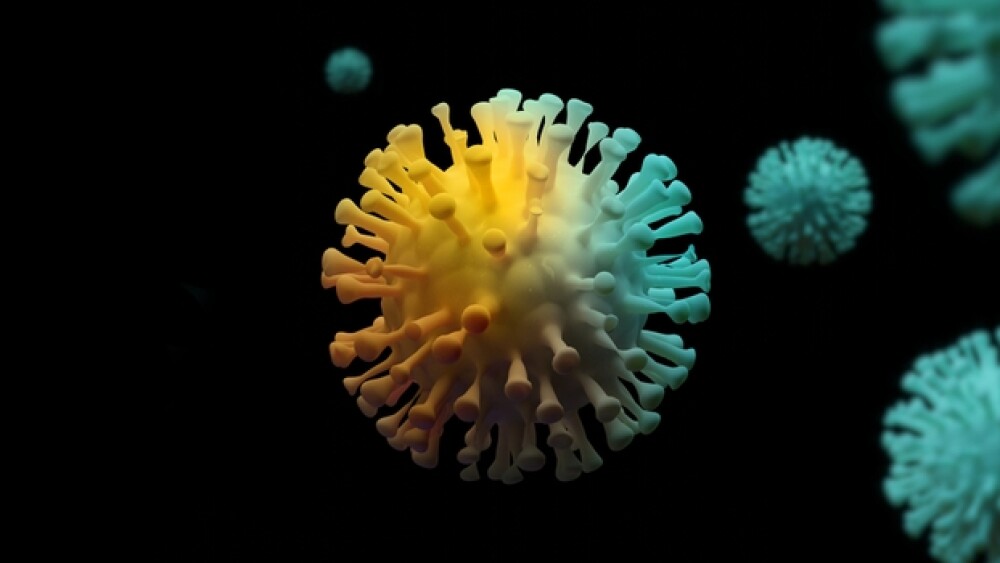The company suggests its approach can actually help eliminate the virus from an already-infected host, while also bolstering the immune response.
Ligandal isn’t the only company developing peptide-based vaccines for COVID-19, but it is the only one developing a prospective “antidote” and vaccine in a single platform. The company suggests its approach can actually help eliminate the virus from an already-infected host, while also bolstering the immune response.
The catch is that the company’s research is still in silico.
Ligandal uses peptide scaffolds designed using artificial intelligence (AI) to predict the immuno-epitopic regions for T cell receptor MHC-1 and MHC-2 loading, immuno-epitopic regions for antibody binding and ACE2 receptor binding regions of the virus.
To the immune system, the design looks like the virus. Consequently, the scaffolds may serve as rapid-response antidotes to an ongoing infection.
Although the scaffolds mimic the virus, there are key differences that enable multiple mechanisms of action.
The virus forms a coating of soluble ACE2 that, it is hypothesized, prevents antibodies from binding on the virus’ spike protein and thereby cloaks it from the immune system. That coating also is present on the cell membrane as a viral entry mechanism.
Ligandal is reprogramming the viral binding elements of SARS-CoV-2 (COVID-19) so the ACE2 coating is removed, making it visible to the adaptive immune system. The ultra-high affinity, fully synthetic peptide scaffold being designed by Ligandal may serve as a competitive displacer to that entry mechanism.
The technology also is expected to offset the need for alternative therapeutic solutions because the peptide scaffolds will expose the virus to the host’s own immune system, thus eliciting an immune response.
As Andre Watson, founder and CEO of Ligandal told BioSpace, “This is a very small scaffold. Just the tip of the spike touches the receptor, so it will only present one immunologic epitope for the B cells that are at the binding interface.” In contrast, a traditional approach using the whole virus protein would generate many other antibodies and trigger an immune cascade that is considered overkill.
The approach also activates the most dominate T-cells to target the key pieces of the virus. Furthermore, the scaffolds are designed to boost the immune system by presenting precise antibody immuno-epitopes as well as T-cell receptor (TCR) immuno-epitopes against the key viral immunogenic sites. The scaffold, therefore, creates a hyperspecific immune response.
“You’re telling the body to respond, and respond really strongly,” Eric Greenberg, a member of Ligandal’s board of directors, told BioSpace.
Eventually, he theorized, it may be possible for the same therapeutic to preempt a virus and also to generate a therapeutic response after someone is infected.
This contrasts with existing vaccine and therapeutic options that may not adequately form an immune response, and frequently treat symptomatic conditions without addressing the root cause of viral propagation and infection.
“We are looking at medicine in a new way,” Watson said. “Instead of treating symptoms or downstream effects, our approach is to reprogram the source of the problem, whether it be at the level of proteins, RNA or DNA.”
The techniques Ligandal is developing to fight COVID-19 infections also hold promise for treating rare monogenic diseases, complex multifactorial diseases and infectious diseases, as well as for regenerative medicine treatments and immunotherapies. Capabilities range from “designing custom protein-mimetic peptides to building sophisticated nanoscale delivery systems.
Ligandal’s peptide scaffold design is fully synthetic, which lends itself to rapid prototyping and personalized approaches for various viruses. It has the potential to scale-up in days or weeks rather than years, according to Watson.
That said, the research is in very early stages. It’s far too soon to speculate about investigational new drug (IND) filing or time to market, yet the need is accelerating.
The COVID-19 virus is more insidious than reported, Greenberg stresses. “In addition to the effects on the body, it also targets the cardiopulmonary center of the brain,” he noted.
Multiple physicians are warning of neurological elements to COVID-19. An April 10 paper in JAMA is one of several documenting neurological manifestations among COVID-19 patients.
“CoV-SARS-2 is a chronic virus,” Watson said. “A traditional vaccine, therefore, is a half measure.”
“The virus is an aerosolized mist. It’s in the air and there’s no known immunity,” Greenberg added. This is a rapidly mutating virus. “Therefore, there must be an antidote. That’s what we’re making.”






